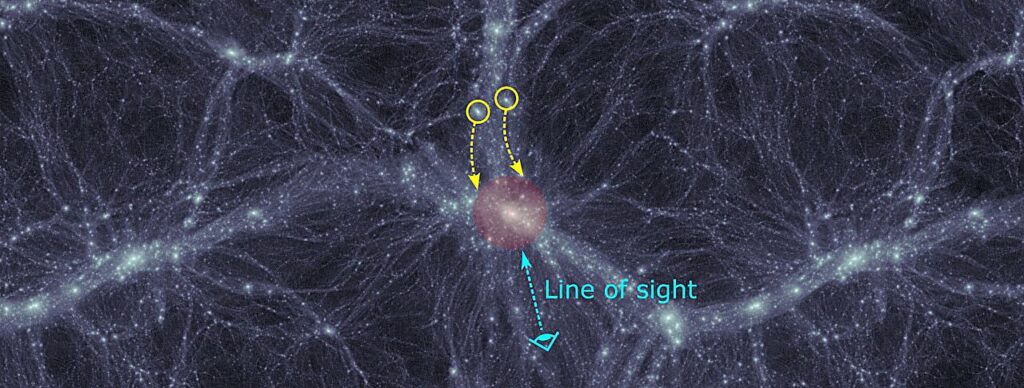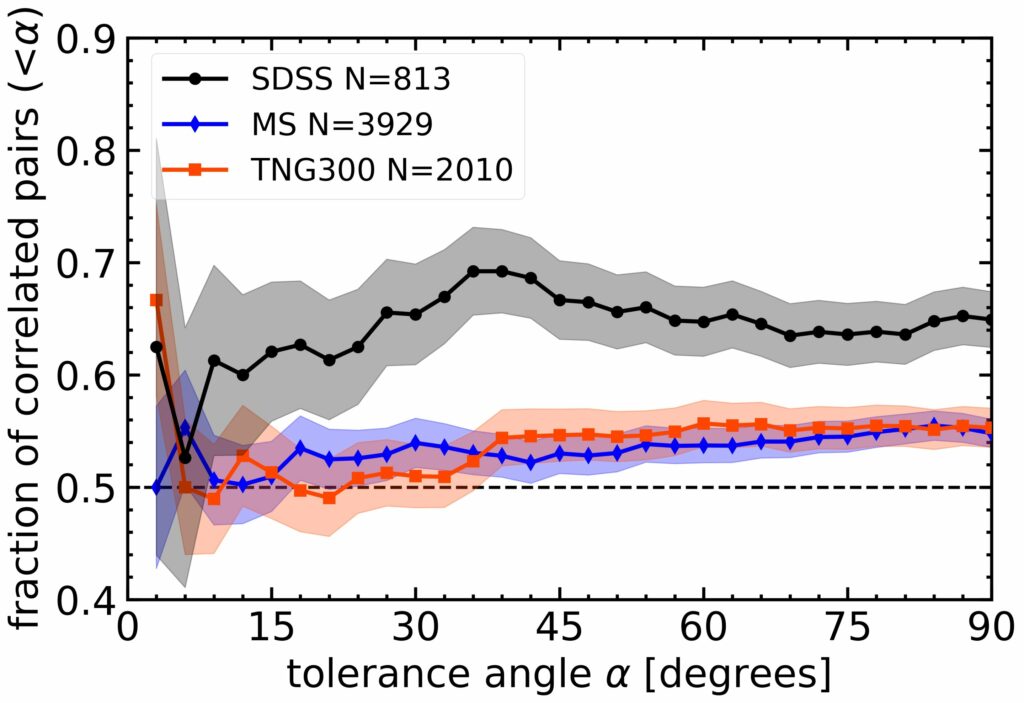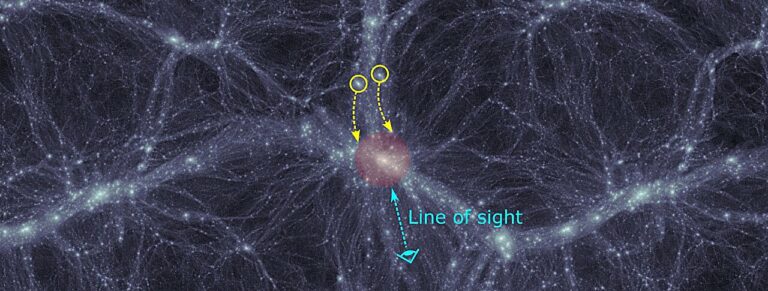Satellite Galaxy Movements Indicate a Younger Universe.
In standard cosmological models, the process of forming cosmological structures commences with the emergence of small structures. These small structures then undergo hierarchical merging, resulting in the formation of larger systems. As the universe progresses in age, the massive galaxy groups and clusters, which are the largest systems, tend to increase in mass and attain a more dynamically relaxed state.
The movements of satellite galaxies around these groups and clusters offer valuable insights into their assembly status. The observations of such motion provide crucial clues regarding the age of the universe.

A research team led by Prof. Guo Qi from the National Astronomical Observatories of the Chinese Academy of Sciences (NAOC) analyzed the kinematics of satellite pairs around massive galaxy groups using public data from the Sloan Digital Sky Survey (SDSS). The team’s findings suggest that the universe may be younger than what was predicted by the LCDM model with Planck cosmological parameters.
Prof. Guo Qi, the corresponding author of the paper, stated that the abundance of satellite pairs with correlated velocity offsets indicates the existence of recently acquired or infalling satellite galaxies. The researchers conducted a study on the movement of satellite pairs located on the opposite side of massive galaxy groups, analyzing their velocity offsets from the central galaxy along the line of sight. They observed a significant surplus of pairs with correlated velocity offsets in comparison to pairs with anti-correlated velocity offsets.

Dr. Gu Qing, the first author of the paper, stated that the observations and simulations reveal a significant difference in the age of massive galaxy groups. This discrepancy suggests that the real universe may be younger compared to the age derived from the cosmic microwave background (CMB) by the Planck Collaboration. These findings pose a challenge to the existing cosmological model and offer potential insights into the Hubble tension problem.
This article is republished from PhysORG under a Creative Commons license. Read the original article.
Do not forget to share your opinion with us to provide you with the best posts !




0 Comments